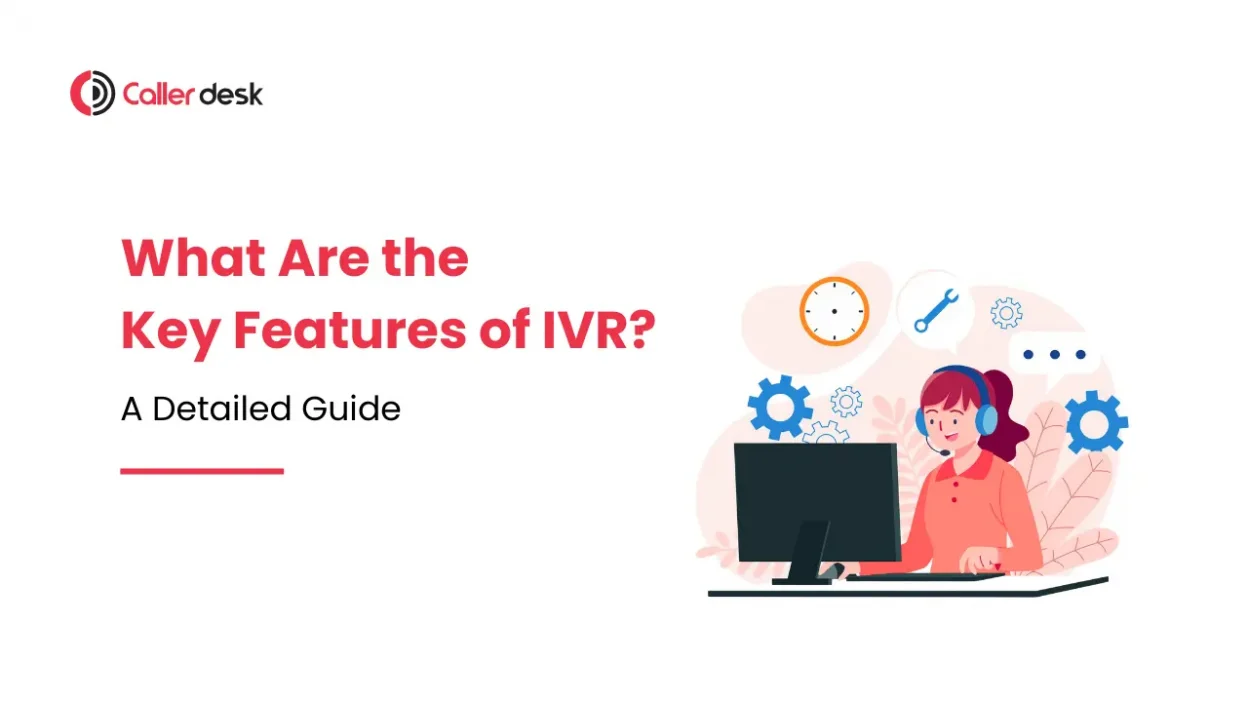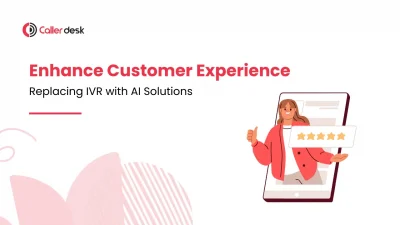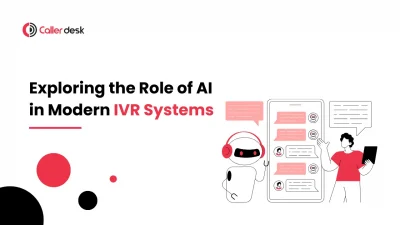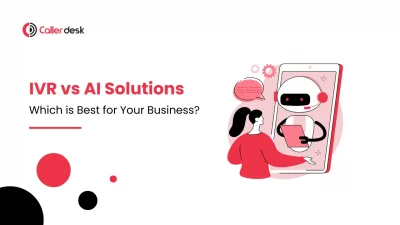Are you finding it challenging to manage a high volume of customer calls while maintaining exceptional service?
You’re not alone. Many businesses struggle to provide prompt and efficient customer support, especially when call volumes spike. That’s where Interactive Voice Response (IVR) systems come into play. By automating call handling and guiding customers to the right solution or department, IVR systems save time, reduce costs, and improve customer satisfaction.
But what exactly makes these systems so effective?
In this blog, we’ll dive into the key features of IVR systems and explain how they work.
What is IVR (Interactive Voice Response)?
Interactive Voice Response (IVR) systems are automated telephone systems that interact with callers, collect information, and direct calls to the appropriate recipient. IVR systems use voice and DTMF (Dual-Tone Multi-Frequency) tones input via a keypad. These systems play a crucial role in managing customer interactions efficiently, offering a range of features that enhance customer service and streamline operations.
Key Features of IVR
1. Automated Call Routing
One of the most important aspects of IVR systems is automated call routing. This feature allows the system to direct calls to the appropriate department or individual without human intervention. Automated call routing increases efficiency and minimizes wait time for callers.
2. Self-Service Options
IVR systems enable customers to address issues without having to speak with an agent. Common self-service options include:
- Checking account balances
- Making payments
- Finding store locations
- Tracking orders
3. Multi-Language Support
Catering to a global audience requires multi-language support. IVR systems can offer prompts in multiple languages, ensuring non-English speakers can navigate the system easily.
4. Integration with CRM Systems
Integration with Customer Relationship Management (CRM) systems allows IVR to access customer data in real-time. This feature helps provide personalized service and quickly address the caller’s needs.
5. Voice Recognition
Modern IVR systems use voice recognition technology, allowing callers to respond verbally instead of using the keypad. This feature makes the interaction more natural and user-friendly.
6. Data Collection and Analysis
IVR systems can collect valuable data during calls, such as caller ID, call duration, and the reason for the call. Analyzing this data helps businesses understand customer behavior and improve their services.
7. Call Recording
Call recording is important for sustaining quality assurance and training. IVR systems can record calls, which allows supervisors to review interactions and ensure high service standards.
8. Customizable Prompts
IVR systems offer customizable prompts, allowing businesses to tailor the system’s responses to their specific needs. Custom prompts can enhance the customer experience by providing relevant information and instructions.
9. Queue Management
Effective queue management ensures that callers are informed about their wait time and position in the queue. IVR systems can offer alternatives such as callback options, improving customer satisfaction.
10. Scalability
IVR systems can easily scale, making them ideal for businesses of any size. As a company expands, the IVR system can manage increased call volumes without sacrificing service quality.
How IVR Works
1. Call Initiation
The procedure begins when a caller dials a phone number that connects to an interactive voice response system. The system picks up the call and plays a pre-recorded greeting message, welcoming the caller and providing initial options.
2. Menu Navigation
The caller is presented with a menu of options, usually numbered. For example:
- Press 1 for account information
- Press 2 for customer support
- Press 3 for billing
The caller selects an option by pressing the corresponding number on their phone keypad or, in some advanced systems, by speaking their choice.
3. Input Recognition
The IVR system interprets the caller’s selections using DTMF tones (keypad inputs) or speech recognition. For speech recognition, the system converts spoken words into digital signals that can be processed and interpreted.
4. Information Processing
Once the system recognizes the input, it processes the request. This can involve accessing databases, retrieving information, and performing actions based on the caller’s input. For example, if a caller requests account information, the system will retrieve the relevant data from the database.
5. Response Generation
The IVR system generates an appropriate response based on the processed information. This response can be a pre-recorded message or dynamically generated text-to-speech output. The response is then communicated to the caller.
6. Call Routing (If Necessary)
If the caller’s request requires human assistance, the IVR system routes the call to the appropriate department or agent. Based on the caller’s input and the system’s setup, the call is routed accordingly, and relevant information about the caller’s request may be provided to the agent.
7. Call Termination
Once the interaction is complete, the IVR system either ends the call or offers additional options to the caller. The system can also record the call data for analysis and quality assurance purposes.
Conclusion
IVR systems are an essential tool for modern businesses, offering numerous features that improve efficiency and customer satisfaction. By understanding and utilizing these key features, businesses can provide exceptional service and streamline their operations. Whether it’s through automated call routing, self-service options, or integration with CRM systems, IVR systems can significantly enhance the customer experience and operational efficiency.
Explore more about how IVR systems can benefit your business and improve customer interactions with CallerDesk’s expert solutions. Contact us today to learn how we can assist you in implementing a robust IVR system tailored to your needs.



